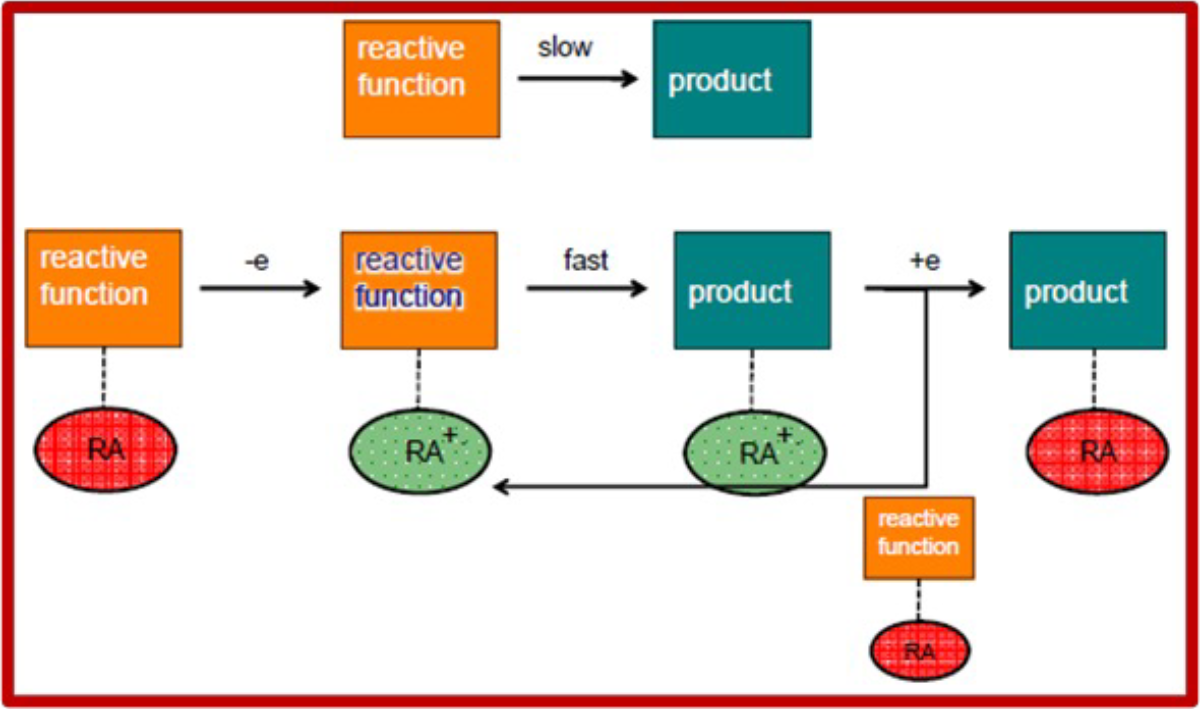The Problem:
The previous technology for inducing electron-transfer catalysis of chemical reactions had many drawbacks. The product had to be a stronger oxidant than the reactant to enable a chain reaction. The applicable reactions had to run at higher temperatures, and therefore, were less efficient to induce. Additionally, redox-auxiliary reactions could not be triggered electronically.
The Solution:
The technology is a new approach to doing electron-transfer catalysis of chemical reactions. It operates by first appending a redox unit (arylamines for example) to a reaction site and then removing an electron (oxidizing) from the redox unit (the redox-auxiliary) which triggers the reaction to occur at the reaction site. This process generalizes the ability to use electron-transfer catalysis for many reactions.
 Schematic of redox-auxiliary catalyst attachment
Schematic of redox-auxiliary catalyst attachment
Benefits:
• Product no longer needs to be stronger than the oxidant.
• Redox-auxiliary group is designed to be very stable.
• Applicable reactions can be run at lower temperature with redox-auxiliary catalysis.
• Saves energy (more efficient).
• Process allows reactions to occur in environments that were previously not possible.
The University of Alabama Office for Innovation and Commercialization(OIC) is a non-profit corporation that is responsible for commercializing University of Alabama technologies and for supporting University research. At OIC, we seek parties that are interested in learning more about our technologies and commercialization opportunities, and we welcome any inquiries you may have.